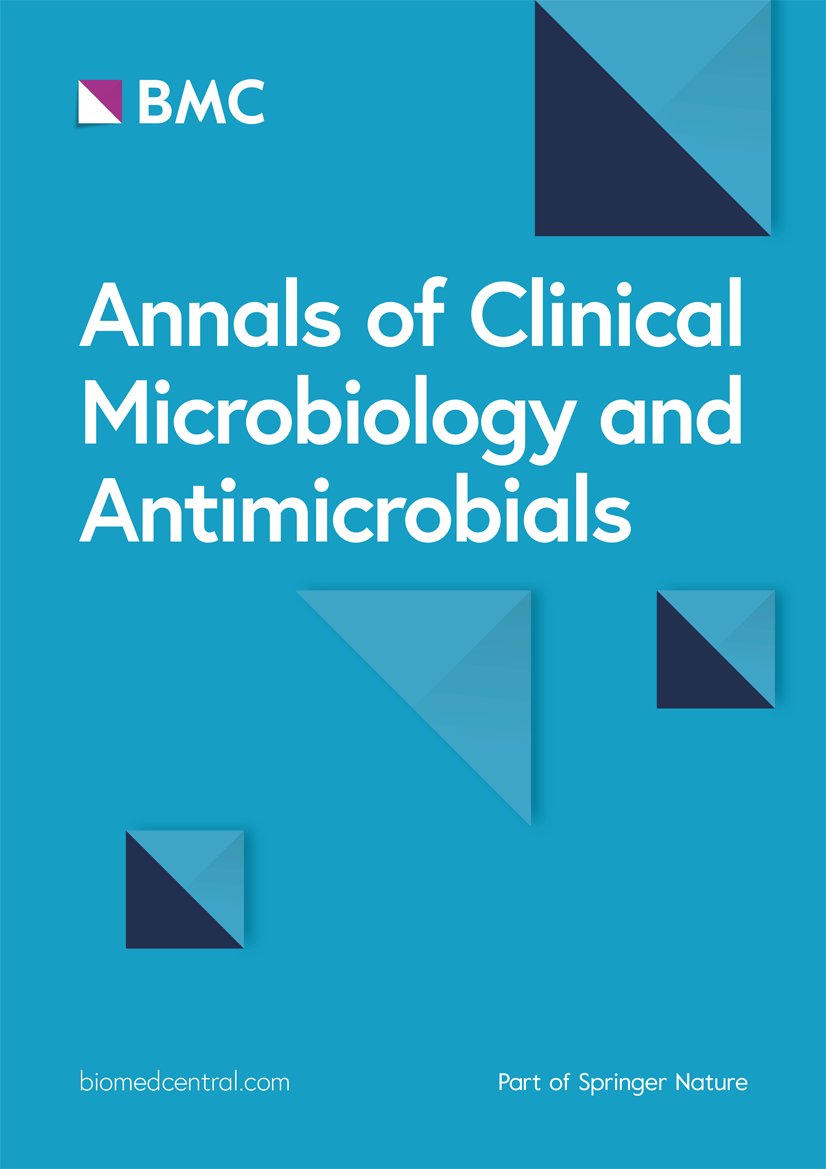利用 LAMP 和 ARMS-PCR 检测 SARS-CoV-2 及其变种的综合方法
IF 4.6
2区 医学
Q1 MICROBIOLOGY
Annals of Clinical Microbiology and Antimicrobials
Pub Date : 2024-02-01
DOI:10.1186/s12941-023-00665-0
引用次数: 0
摘要
COVID-19 大流行对全球的影响加剧了高效病毒检测和变异(如 Q57H 突变)鉴定的紧迫性。在人口稠密的发展中国家及早有效地检测出 SARS-CoV-2 是最重要的目标。尽管 RT-PCR 检测法具有准确性,但对大型试剂盒的依赖性和相关卫生资源的可用性给发展中国家带来了巨大挑战。本研究基于 RT-LAMP 检测 SARS-Cov-2 并随后通过 ARMS-PCR 确认 Q57H 变体。在采集的 212 份样本中,134 份样本检测结果呈阳性,78 份样本检测结果呈阴性。收集疑似患者的口咽拭子并进行病毒 RNA 分离处理。分离出的病毒 RNA 分别使用市售的 WarmStart 混合母液或我们自行开发的 LAMP 混合母液进行进一步处理。随后,用比色法评估每个样本的最终结果。在 LAMP 检测中,使用 PrimerExplorer 软件设计了针对三个基因(ORF1ab、N 和 S)的引物。有趣的是,将这三个基因集中到一个反应管中可提高 LAMP 检测的灵敏度(95.5%)和特异性(93.5%)。使用 ARMS-PCR 进一步筛查 SARS-CoV-2 阳性标本中的 Q57H 突变。根据扩增子大小的变化(后经测序证实),我们的数据显示 18.5% 的样本对 Q57H 突变呈阳性。因此,这些研究结果强烈建议在可疑的普通人群中使用基于 RT-LAMP 的检测方法筛查 SARS-CoV-2。此外,ARMS-PCR 也是检测 SARS-Cov-2 流行突变的有效方法。本文章由计算机程序翻译,如有差异,请以英文原文为准。
Integrated approach for detection of SARS-CoV-2 and its variant by utilizing LAMP and ARMS-PCR
Global impact of COVID-19 pandemic has heightened the urgency for efficient virus detection and identification of variants such as the Q57H mutation. Early and efficient detection of SARS-CoV-2 among densely populated developing countries is paramount objective. Although RT-PCR assays offer accuracy, however, dependence on expansive kits and availability of allied health resources pose an immense challenge for developing countries. In the current study, RT-LAMP based detection of SARS-Cov-2 with subsequent confirmation of Q57H variant through ARMS-PCR was performed. Among the 212 collected samples, 134 yielded positive results, while 78 tested negative using RT-LAMP. Oropharyngeal swabs of suspected individuals were collected and processed for viral RNA isolation. Isolated viral RNA was processed further by using either commercially available WarmStart Master Mix or our in house developed LAMP master mix separately. Subsequently, the end results of each specimen were evaluated by colorimetry. For LAMP assays, primers targeting three genes (ORF1ab, N and S) were designed using PrimerExplorer software. Interestingly, pooling of these three genes in single reaction tube increased sensitivity (95.5%) and specificity (93.5%) of LAMP assay. SARS-CoV-2 positive specimens were screened further for Q57H mutation using ARMS-PCR. Based on amplicon size variation, later confirmed by sequencing, our data showed 18.5% samples positive for Q57H mutation. Hence, these findings strongly advocate use of RT-LAMP-based assay for SARS-CoV-2 screening within suspected general population. Furthermore, ARMS-PCR also provides an efficient mean to detect prevalent mutations against SARS-Cov-2.
求助全文
通过发布文献求助,成功后即可免费获取论文全文。
去求助
来源期刊

Annals of Clinical Microbiology and Antimicrobials
MICROBIOLOGY-
CiteScore
8.60
自引率
0.00%
发文量
49
审稿时长
>12 weeks
期刊介绍:
Annals of Clinical Microbiology and Antimicrobials considers good quality, novel and international research of more than regional relevance. Research must include epidemiological and/or clinical information about isolates, and the journal covers the clinical microbiology of bacteria, viruses and fungi, as well as antimicrobial treatment of infectious diseases.
Annals of Clinical Microbiology and Antimicrobials is an open access, peer-reviewed journal focusing on information concerning clinical microbiology, infectious diseases and antimicrobials. The management of infectious disease is dependent on correct diagnosis and appropriate antimicrobial treatment, and with this in mind, the journal aims to improve the communication between laboratory and clinical science in the field of clinical microbiology and antimicrobial treatment. Furthermore, the journal has no restrictions on space or access; this ensures that the journal can reach the widest possible audience.
 求助内容:
求助内容: 应助结果提醒方式:
应助结果提醒方式:


